|
|
2015年, 第2卷, 第1期 刊出日期:2015-01-01
|
上一期
下一期 |
|
|
|
|
|
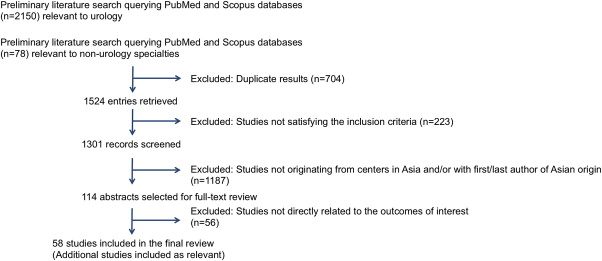
The growth of computer-assisted (robotic) surgery in urology 2000-2014: The role of Asian surgeons
Deepansh Dalela, Rajesh Ahlawat, Akshay Sood, Wooju Jeong, Mahendra Bhandari, Mani Menon
Asian Journal of Urology, 2015, 2(1): 1-10.
 摘要
摘要
(
354 )
 PDF
PDF (647KB)
(
390
)
Objective: A major role in the establishment of computer-assisted robotic surgery (CARS) can be traced to the work of Mani Menon at Vattikuti Urology Institute (VUI), and of many surgeons of Asian origin. The success of robotic surgery in urology has spurred its acceptance in other surgical disciplines, improving patient comfort and disease outcomes and helping the industrial growth. The present paper gives an overview of the progress and development of robotic surgery, especially in the field of Urology; and to underscore some of the seminal work done by the VUI and Asian surgeons in the development of robotic surgery in urology in the US and around the world. Methods: PubMed/Medline and Scopus databases were searched for publications from 2000 through June 2014, using algorithms based on keywords "robotic surgery", "prostate", "kidney", "adrenal", "bladder", "reconstruction", and "kidney transplant". Inclusion criteria used were published full articles, book chapters, clinical trials, prospective and retrospective series, and systematic reviews/meta-analyses written in English language. Studies from Asian institutions or with the first/senior author of Asian origin were included for discussion, and focused on techniques of robotic surgery, relevant patient outcomes and associated demographic trends. Results: A total of 58 articles selected for final review highlight the important strides made by robots in urology, from robotic radical prostatectomy in 2000 to robotic kidney transplant in 2014. In the hands of an experienced robotic surgeon, it has been demonstrated to improve functional patient outcomes and minimize perioperative complications compared to open surgery, especially in urologic oncology and reconstructive urology. With increasing surgeon proficiency, the benefits of robotic surgery were consistently seen across different surgical disciplines, patient populations, and strata. Conclusion: The addition of robot to the surgical armamentarium has allowed better patient care and improved disease outcomes. VUI and surgeons of Asian origin have played a pioneering role in dissemination of computer-assisted surgery.
参考文献 |
相关文章 |
计量指标
|
|
|
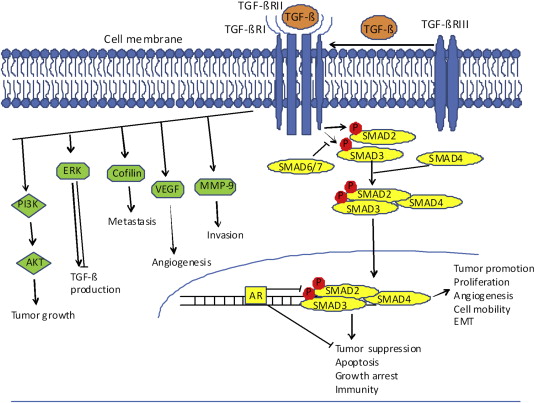
Mechanisms navigating the TGF-β pathway in prostate cancer
Zheng Cao, Natasha Kyprianou
Asian Journal of Urology, 2015, 2(1): 11-18.
 摘要
摘要
(
405 )
 PDF
PDF (1533KB)
(
668
)
Few pharmacotherapies are currently available to treat castration resistant prostate cancer (CRPC), with low impact on patient survival. Transforming growth factor-β (TGF-b) is a multi-functional peptide with opposite roles in prostate tumorigenesis as an inhibitor in normal growth and early stage disease and a promoter in advanced prostate cancer. Dysregulated TGF-β signaling leads to a cascade of events contributing to oncogenesis, including upregulated proliferation, decreased apoptosis, epithelial-to-mesenchymal transition (EMT) and evasion of immune surveillance. TGF-β signaling pathway presents an appropriate venue for establishing a therapeutic targeting platform in CRPC. Exploitation of TGF-β effectors and their cross talk with the androgen axis pathway will provide new insights into mechanisms of resistance of the current antiandrogen therapeutic strategies and lead to generation of new effective treatment modalities for CRPC. Points of functional convergence of TGF-β with key oncogenic pathways, including mitogen-activated protein kinase (MAPK) and androgen receptor (AR), are discussed as navigated within the EMT landscape in the tumor microenvironment. In this context the emerging anti-TGF-β pharmacotherapies for prostate cancer treatment are considered. Targeting the functional cross-talk between the TGF-β signaling effectors with the androgen axis supports the development of novel therapeutic strategies for treating CRPC with high specificity and efficacy in a personalized-medicine approach.
参考文献 |
相关文章 |
计量指标
|
|
|

Renal cell carcinoma: An update for the practicing urologist
Sumanta K. Pal, Paulo Bergerot, Robert A. Figlin
Asian Journal of Urology, 2015, 2(1): 19-25.
 摘要
摘要
(
329 )
 PDF
PDF (341KB)
(
430
)
Systemic therapy for metastatic renal cell carcinoma (mRCC) has evolved drastically, with agents targeting vascular endothelial growth factor (VEGF) and the mammalian target of rapamycin (mTOR) now representing a standard of care. The present paper is to review the current status of relevant clinical trials that were either recently completed or ongoing. (1) Though observation remains a standard of care following resection of localized disease, multiple trials are underway to assess VEGF-and mTOR-directed therapies in this setting. (2) While the preponderance of retrospective data favors cytoreductive nephrectomy in the context of targeted agents, prospective data to support this approach is still forthcoming. (3) The first-line management of mRCC may change substantially with multiple studies exploring vaccines, immune checkpoint inhibitors, and novel targeted agents currently underway. In general, prospective studies that will report within the next several years will be critical in defining the role of adjuvant therapy and cytoreductive nephrectomy. Over the same span of time, the current treatment paradigm for first-line therapy may evolve.
参考文献 |
相关文章 |
计量指标
|
|
|
Advances in percutaneous stone surgery
Christopher Hartman, Nikhil Gupta, David Leavitt, David Hoenig, Zeph Okeke, Arthur Smith
Asian Journal of Urology, 2015, 2(1): 26-32.
 摘要
摘要
(
344 )
 PDF
PDF (340KB)
(
531
)
Treatment of large renal stones has changed considerably in recent years. The increasing prevalence of nephrolithiasis has mandated that urologists perform more surgeries for large renal calculi than before, and this has been met with improvements in percutaneous stone surgery. In this review paper, we examine recent developments in percutaneous stone surgery, including advances in diagnosis and preoperative planning, renal access, patient position, tract dilation, nephroscopes, lithotripsy, exit strategies, and post-operative antibiotic prophylaxis.
参考文献 |
相关文章 |
计量指标
|
|
|
Effect of phosphodiesterase inhibitors in the bladder
Bilal Chughtai, Aizaz Ali, Claire Dunphy, Steven A. Kaplan
Asian Journal of Urology, 2015, 2(1): 33-37.
 摘要
摘要
(
373 )
 PDF
PDF (329KB)
(
492
)
Many aging men will experience lower urinary tract symptoms (LUTS). Phosphodiesterase type 5 (PDE5) inhibitors have shown promise in treating LUTS in these patients. PDE5 inhibitors mediate their effects through several pathways including cAMP, NO/cGMP, Kchannel modulated pathways, and the L-cysteine/H2S pathway. PDE5 inhibitors exert their effect in muscle cells, nerve fibers, and interstitial cells (ICs). The use of PDE5 inhibitors led to improvement in LUTS. This included urodynamic parameters. PDE5 inhibitors may play a significant role in LUTS due to their effect on the bladder rather than the prostate.
参考文献 |
相关文章 |
计量指标
|
|
|
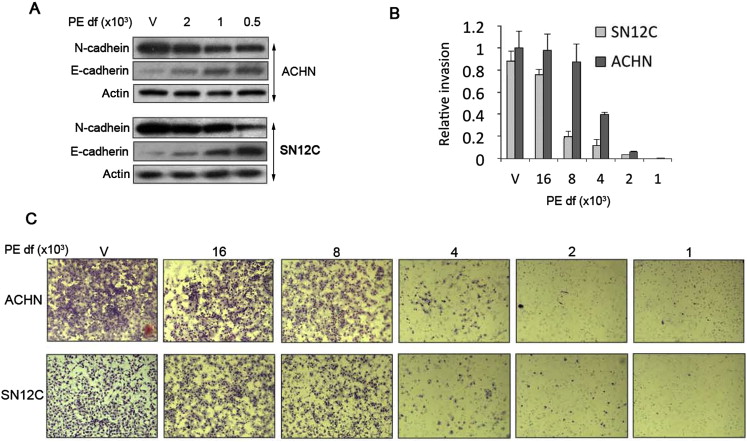
Pomegranate extract inhibits EMT in clear cell renal cell carcinoma in a NF-κB and JNK dependent manner
Jiabin An, Yanchuan Guo, Ting Wang, Allan J. Pantuck, Matthew B. Rettig
Asian Journal of Urology, 2015, 2(1): 38-45.
 摘要
摘要
(
364 )
 PDF
PDF (2912KB)
(
440
)
Objective: Clear cell renal cell carcinoma (ccRCC) is the most common subtype of renal cell carcinoma (RCC) and is characterized by biallelic inactivation of the von Hippel-Lindau (VHL) tumor suppressor gene. One effect of VHL inactivation is hypoxia inducible factor alpha (HIFα)-independent constitutive activation of nuclear factor kappa B (NF-κB) and c-jun N-terminal kinase (JNK). Both NF-κB and JNK drive ccRCC growth and epithelial to mesenchymal transition (EMT). The purpose of this study was to determine the biochemical effects of pomegranate juice extracts (PE) on RCC cell lines. Methods: The pre-clinical effects of PE on NF-κB, JNK, and the EMT phenotype were assayed, including its effect on proliferation, anchorage-independent growth, and invasion of pVHLdeficient RCCs. Results: PE inhibits the NF-κB and JNK pathways and consequently inhibits the EMT phenotype of pVHL-deficient ccRCCs. The effects of PE are concentration-dependent and affect not only biochemical markers of EMT (i.e., cadherin expression) but also functional manifestations of EMT, such as invasion. These effects are manifested within days of exposure to PE when diluted 2000-fold. Highly dilute concentrations of PE (106 dilution), which do not impact these pathways in the short term, were found to have NF-κB and JNK inhibitory effects and ability to reverse the EMT phenotype following prolonged exposure. Conclusion: These findings suggest that PE may mediate inhibition growth of pVHL-deficient ccRCCs and raises the possibility of its use as a dietary adjunct to managing patients with active surveillance for small, localized, incidentally identified renal tumors so as to avoid more invasive procedures such as nephrectomy.
参考文献 |
相关文章 |
计量指标
|
|
|
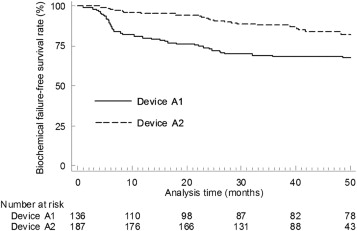
Single application of high-intensity focused ultrasound as primary therapy of localized prostate cancer: Treatment-related predictors of biochemical outcomes
Dietrich Pfeiffer, Juergen Berger, Andreas Gross
Asian Journal of Urology, 2015, 2(1): 46-52.
 摘要
摘要
(
327 )
 PDF
PDF (433KB)
(
394
)
Objective: Recent reports on high-intensity focused ultrasound (HIFU) treatment of localized prostate cancer suggest that preoperative risk groups of tumor recurrence are strong predictors of oncological outcomes. The purpose of this study is to determine the prognostic significance of treatment-related factors in relation to patient characteristics for biochemical outcomes after HIFU. Methods: This retrospective single-center study included patients treated from December 2002 to December 2010 for localized prostate cancer with two generations of Ablatherm® HIFU devices (A1 and A2). All the patients underwent single HIFU treatment session under the concept of whole-gland therapy. Prostate surgery was performed before HIFU to downsize enlarged glands. Androgen deprivation therapy (ADT) was discontinued before HIFU. Biochemical failure (BCF) was defined as prostate specific antigen (PSA) nadir+1.2 ng/mL (Stuttgart definition). Predictors of BCF were determined using Cox regression models. As covariates, patient-related factors (age, tumor characteristics, ADT) were compared with treatmentrelated factors (prostate volume, HIFU device generation, conduct of therapy, prostate edema, patient movement, anesthetic modalities). Results: Three hundred and twenty-three (98.8%) out of 327 consecutive patients were evaluable for BCF. Median (interquartile range) follow-up was 51.2 (36.6-80.4) months. The overall BCF-rate was 23.8%. In multivariate analyses, higher initial PSA-values (Hazard ratio [HR]: 1.03; p < 0.001) and higher D'Amico risk stages (HR: 3.45; p < 0.001) were patient-related predictors of BCF. Regarding treatment-related factors, the A2 HIFU device was associated with a decreased risk of BCF (HR: 0.51; p=0.007), while prostate edema had an adverse effect (HR: 1.8; p=0.027). Short follow-up and retrospective study design are the primary limitations.
参考文献 |
相关文章 |
计量指标
|
|
|

Impact of tertiary Gleason pattern 5 on prostate cancer aggressiveness: Lessons from a contemporary single institution radical prostatectomy series
Zachary B. Koloff, Daniel A. Hamstra, John T. Wei, Jeffrey S. Montgomery, Scott A. Tomlins, Angela J. Wu, Todd M. Morgan, Javed Siddiqui, Kellie Paich, Arul M. Chinnaiyan, Felix Y. Feng, Alon Z. Weizer, Lakshmi P. Kunju, Brent K. Hollenbeck, David C. Miller, Ganesh S. Palapattu, Rohit Mehra
Asian Journal of Urology, 2015, 2(1): 53-58.
 摘要
摘要
(
491 )
 PDF
PDF (671KB)
(
356
)
Objective: To better evaluate tertiary Gleason pattern reporting and to evaluate the impact of tertiary Gleason pattern 5 (TP5) on prostate cancer pathological features and biochemical recurrence at our large single institution. Methods: We retrospectively reviewed 1962 patients who underwent radical prostatectomy (RP) for prostate cancer; TP5 was reported in 159 cases (8.1%). Men with Gleason score (GS) 7 and GS 8 disease were divided into subgroups with and without TP5, and histopathological features were compared. Multivariate analyses were conducted to assess the impact on TP5 on biochemical-free survival (BFS). Results: Tumors possessing GS 3+4 with TP5 were more likely to exhibit extraprostatic extension (EPE) and had a larger tumor diameter (TD) than GS 3+4 alone. GS 3+4 with TP5 was also associated with positive surgical margins (SM), seminal vesicle involvement (SVI), and higher pre-operative prostate-specific antigen (PSA) values, but without statistical significance. GS 4+3 with TP5 more commonly presented with EPE, positive SM, SVI, and greater TD and pre-operative PSA level than GS 4+3 alone. In multivariate analysis, Gleason score, EPE, and TP5 were overall independent risk factors for PSA recurrence in this cohort. Additionally, GS 4+3 with TP5 was associated with shorter time to recurrence versus GS 4+3 alone. Conclusion: Our results emphasize the importance of TP5 and suggest that criteria for tertiary pattern reporting in prostate cancer should be standardized. Further studies are needed to evaluate the role of tertiary patterns in prognostic models.
参考文献 |
相关文章 |
计量指标
|
|
|
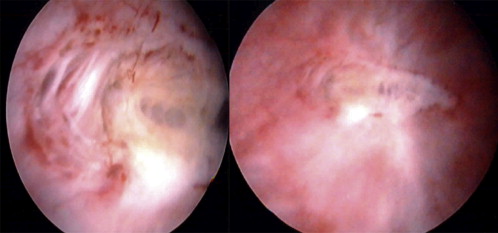
Endoscopic lysis of bladder scar associated with Hunner's lesions: A new technique
Sonia Bahlani, Robert Moldwin
Asian Journal of Urology, 2015, 2(1): 59-62.
 摘要
摘要
(
382 )
 PDF
PDF (820KB)
(
401
)
Objective: Five to ten percent of interstitial cystitis/bladder pain syndrome (IC/BPS) patients have Hunner's lesions (HL), areas of non-specific inflammation and scarring. The poor quality of life of patients with HL is entwined in associated pain and loss of bladder capacity. Although the decrease in bladder capacity is usually dependent on pain, it may also be dependent upon scarring and associated compliance changes produced by the inflammatory process. This report reviews the potential role of endoscopic scar lysis using the holmium laser in the management of these patients whose only other therapeutic option is urinary diversion. Methods: Two patients with HL and "end stage" bladders who underwent holmium laser division of bladder wall scar/tethering were identified. Clinical data were reviewed with emphasis on safety and efficacy. Results: Both patients selected for this procedure underwent holmium laser lysis of known scar tissue in an effort to increase bladder capacity and improve symptoms of urinary frequency and pain with bladder filling. The median age of patients who underwent the procedure was 63 (59-67) years. Incisions were made with the holmium laser at frequencies of 3-10 Hz of 300-700 J along the region of scarring. All procedures were performed by the same practitioner. There was an increase in bladder capacity by 58.3% (50.0%-66.7%). During a mean follow-up of 4.2 years, there appeared to be a significant improvement with an increase in interval time between voids and a decrease in pain with bladder filling. Conclusion: Patients with IC/BPS may be severely debilitated by a clinically significant decrease in their bladder capacity, especially in the face of HL. The use of the holmium laser to incise regions of scar and bladder wall tethering may produce a clinically significant and durable increase in bladder capacity. The use of this technique as a means of treating bladder scarring poses an excellent adjunct to existing treatment strategies.
参考文献 |
相关文章 |
计量指标
|
|
 当期目录
当期目录
